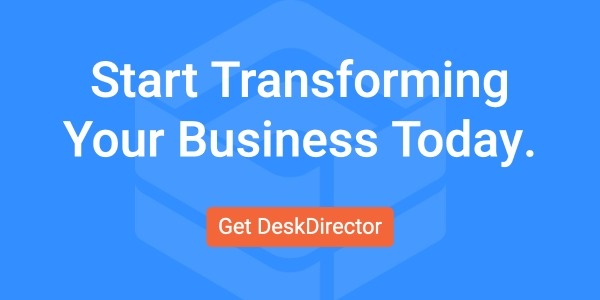The digital evolution brings significant impacts on IT. On the one hand, there are more apps and systems to manage, which means a larger workload and a higher demand for IT expertise. Yet, seemingly at odds with this new demand comes another byproduct of the digital transformation: The business world at large is now more confident with technology.
Companies have grown accustomed to searching for, choosing, and running their own digital systems instead of relying on IT suppliers to handle it. Even IT that serves only their internal teams may notice that department leads are making tech adoption decisions independently.
This creates a balancing act for IT leaders –– they must meet the higher demand for their teams’ skills while still working with clients who take a more active role in tech management. CIOs must adapt to this new landscape by both guiding and empowering digital-savvy clients and internal teams to achieve their desired outcomes.
Embrace Low-Code/No-Code
Whether you provide IT services for clients or only service your internal teams, you might notice a rise in citizen developers building apps with low-code/no-code tools. Low-code/no-code (LCNC) is beneficial because it empowers even those without much coding experience to create essential tools and apps a company might need. It also typically takes less time and expense to create with low-code/no-code platforms than with a full-scale development project.
With how busy and in-demand IT departments are, LCNC can be a great way to lift the load off their shoulders and get more projects done or delegated to other teams. CIOs can also leverage LCNC for customers or for their own team to accelerate project completion and meet specific business needs.
A word of caution: If low-code/no-code tools aren’t appropriately managed, it might hinder rather than further progress. Be sure that IT stays involved with every LCNC effort and steps in when citizen developers won’t cut it for certain projects. Remember, businesses still rely on IT expertise, so they need you to guide the complex decisions.
Leverage Automation and Mind the Tech Stack
Automation remains the ultimate productivity powerhouse, so leveraging AI and automated tools in as many areas as possible will help boost business. Leadership must adapt if they haven’t already –– a report on the future of work estimates that one-third of work activities could be automated in about 60% of occupations.
As a CIO, if you want to drive optimal results, you need to use automation as often as possible for your own department, then encourage your clients and internal users to do the same. Most critical for IT is selecting an ITSM tool. The right platform should include some sort of automated workflow builder, SOP creation and ticket embedding capability, approval automation, and user-friendly portal access.
If you have a strong ITSM platform, it’s vital that it’s a part of a robust and powerful tech stack to serve your business operations and clients. Some general things to consider about your tech stack:
- Scalable: Can your tech stack easily grow and adapt to your business?
- Integration: Can you connect your apps? Are there obvious, clunky siloes that prevent optimal productivity?
- Cost: Are there too many apps that aren’t necessary? Are you spending too much in certain areas that don’t offer a return?
- Value: Does each piece of the tech ecosystem positively impact the business?
A poorly managed tech stack can slow a business down, cost more money, and prevent targets from being met. IT can help support an organization by taking the lead on reviewing and managing the tech stack. After all, as IT becomes more directly tied to business value, CIOs must be hyper-involved with the digital ecosystem.
Devote More Energy to Security
Maintaining vigilant security is one of the best ways to empower your tech-confident clients and internal teams. Cybersecurity is more critical than before the digital transformation. With the influx of more digital tools and a heavier reliance on tech, attacks have risen in the past few years and become more severe in their impact. The cost of cybercrime is predicted to hit $10.5 trillion by 2025. And according to research by Accenture, security attacks increased 31% from 2020 to 2021, with the number of attacks per company rising from 206 to 270 year over year.
CIOs must evaluate and re-evaluate their risk management strategy and incident response to protect themselves and their clients. If an incident does occur, follow up with a review of the results and determine how to minimize business damage or disruption next time.
Offer Self-Service Support Options and Continuous Training
The tech-confident professionals in the workforce feel empowered to solve their own problems. According to the Harvard Business Review, 81% of customers across industries attempt to take care of matters themselves before reaching out to a live representative.
If you offer users ways to find answers independently, the IT support techs can focus on resolving more pressing requests. So start incorporating self-service options for users that may need IT support. One of the most common ways to do this is by setting up a knowledge base or community where users can find quick solutions. You can also set up AI chatbots to assist with more straightforward questions.
Additionally, it’s always good to equip your clients and internal teams with more training and knowledge to help them navigate new systems, processes, and tools. Try offering educational resources like webinars, courses, documents, SOPs, videos, etc. You can incorporate this through software like an LMS (learning management system) or even through your user portal within an ITSM solution.
Conclusion
As time goes by, CIOs are becoming more valuable to the business as they lead their IT strategy. Continue to track progress like KPIs, customer satisfaction, costs saved, and productivity to demonstrate your value. And remember, when your tech-savvy clients feel empowered, you’re winning.









